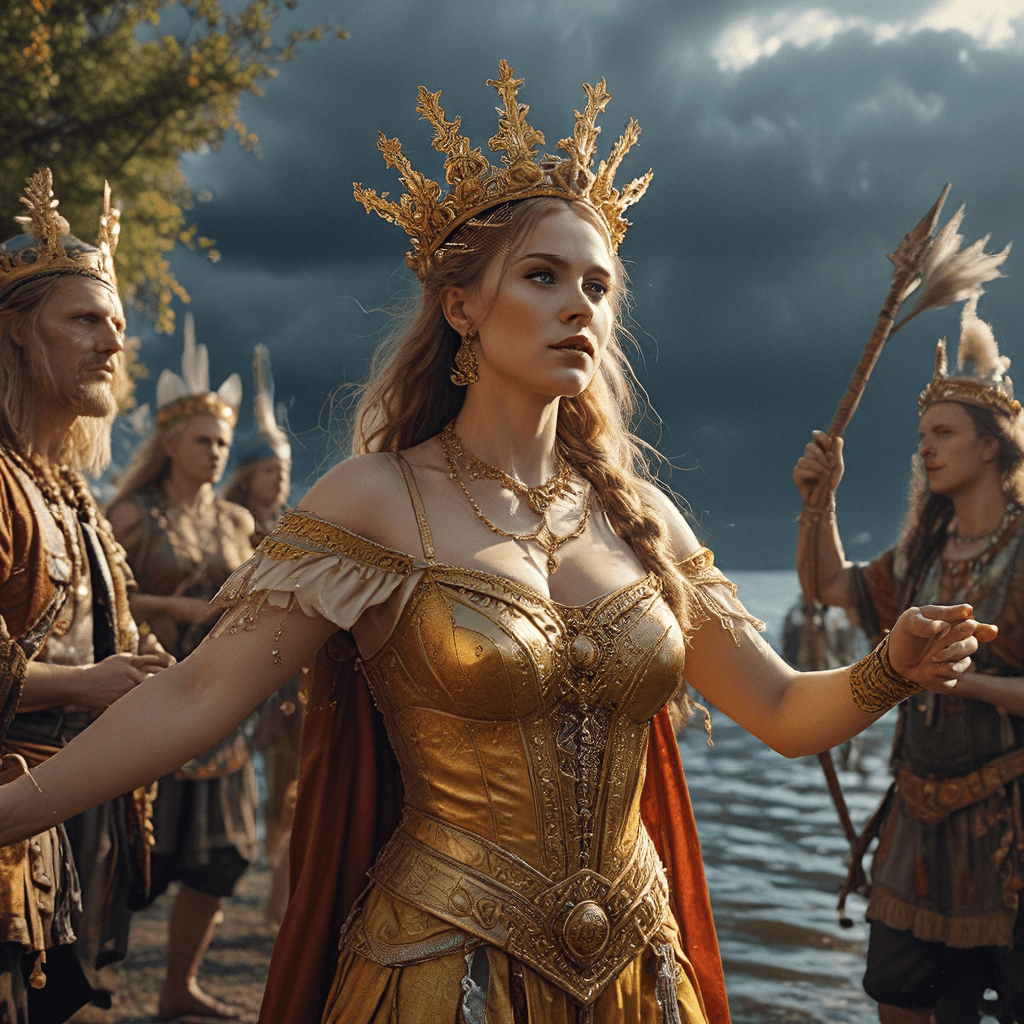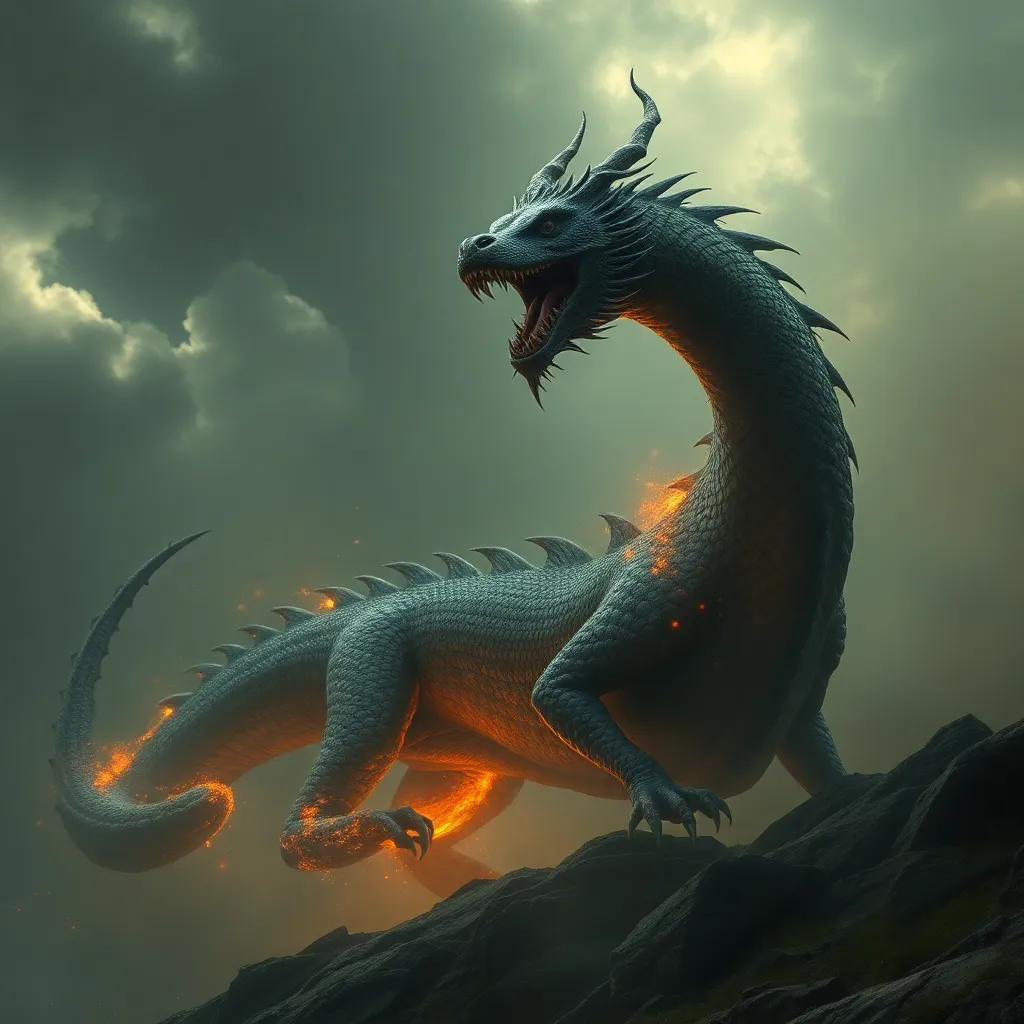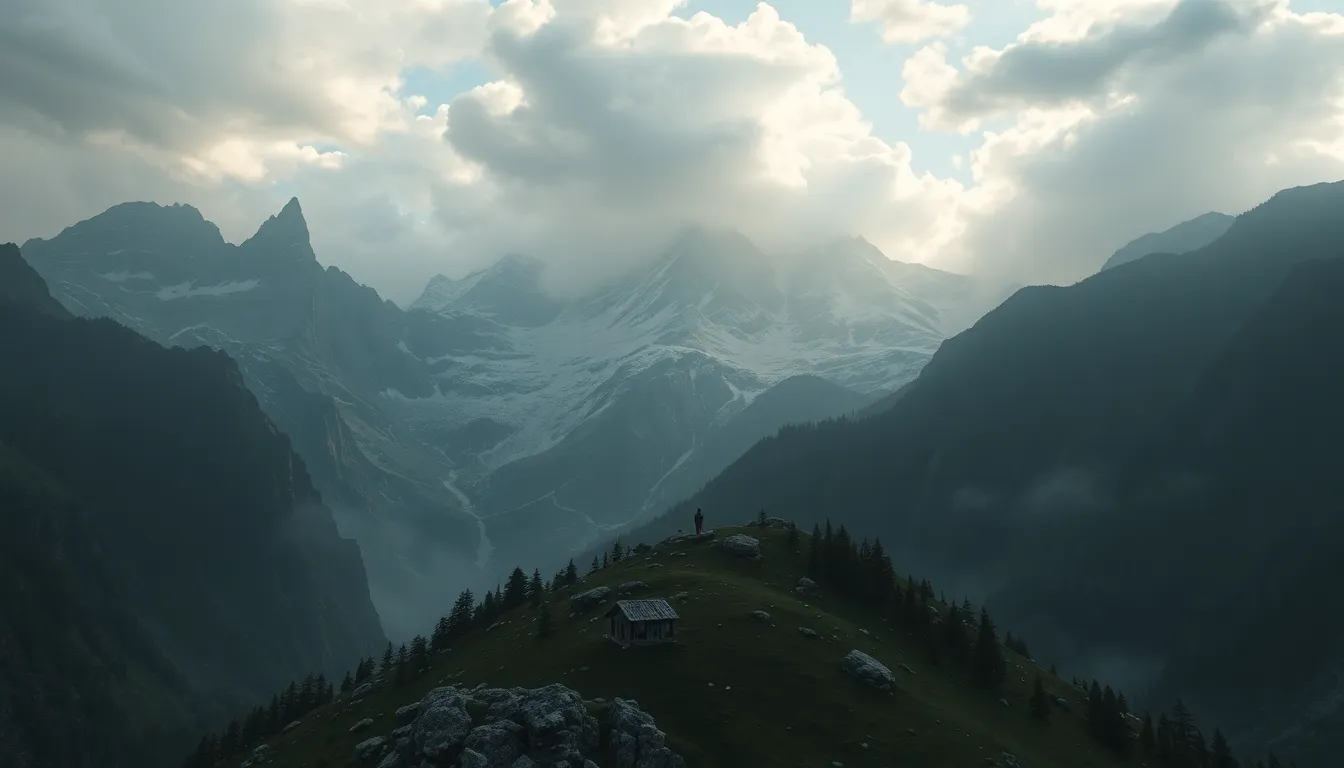Baltic Mythology: A Tapestry of Nature and Spirits
The Baltic region, encompassing countries like Lithuania, Latvia, and Estonia, is steeped in rich folklore and mythology. These ancient stories, passed down through generations, provide a fascinating window into the beliefs and values of the people. Baltic mythology is unique in its focus on nature, spirits, and the interconnectedness of all things. Unlike many other mythologies, it lacks a single, overarching deity. Instead, it features a pantheon of gods and goddesses who represent various aspects of the natural world and human life. These stories are not just entertaining tales; they offer a deep understanding of the Baltic people’s worldview, their relationship with the environment, and their rituals and celebrations.
The Gods and Goddesses of Baltic Folklore: Shaping the Seasons and Human Life
Baltic mythology is a captivating blend of ancient beliefs and cultural practices, where human lives are intertwined with the forces of nature. The gods and goddesses are not distant, abstract beings, but rather powerful forces that directly influence the seasons, the weather, and even the destinies of individuals. These deities are deeply connected to the natural world, with each representing a specific element or aspect of life. The Baltic people honored and appeased these divine beings through rituals, offerings, and festivals.
For example, Perkūnas, the thunder god, is associated with storms, lightning, and the power of the sky. He was revered as a protector of the harvest and a bringer of justice. Laima, the goddess of fate, is a more benevolent figure, weaving the threads of destiny and guiding the souls of the newly born. She is responsible for determining an individual's life path, health, and fortune. Jūratė, the sea goddess, is a powerful ruler of the Baltic waters, guarding the depths and ensuring the well-being of fishermen. These are just a few examples of the many gods and goddesses that populate Baltic mythology, each with unique powers and responsibilities.
Perkūnas, the Thunder God: Lord of Storms and Protector of the Harvest
Perkūnas, the thunder god, is one of the most prominent figures in Baltic mythology. He is a powerful and formidable deity, associated with storms, lightning, and the strength of the sky. Perkūnas wields a mighty hammer, which he uses to create thunder and lightning bolts. He is feared for his destructive power, but he is also revered as a protector of the harvest and a bringer of justice.
Perkūnas is often depicted as a warrior god, clad in armor and wielding weapons. He is a symbol of power, strength, and the untamed forces of nature. His presence is felt during storms, when the sky crackles with lightning and the earth trembles with thunder. But Perkūnas is not just a destructive force. He is also a protector of the harvest, ensuring that crops grow strong and plentiful. Farmers would offer sacrifices to Perkūnas, hoping to appease him and gain his favor.
Laima, the Goddess of Fate: Weaving Destiny and Guiding Souls
Laima, the goddess of fate, is a more benevolent figure in Baltic mythology. She is known as the weaver of destiny, shaping the lives of individuals from the moment they are born. Laima is depicted as a kind and compassionate figure, holding a spindle and thread, symbolizing the interconnectedness of life. She is a guardian of children, ensuring their well-being and guiding them on their life paths.
Laima is believed to be present at the birth of every child, determining their fate and destiny. She is also responsible for ensuring a good life, good health, and happiness. She is a symbol of hope and optimism, reminding people that even though life can be uncertain, there is always hope for a good future.
Jūratė, the Sea Goddess: Ruler of the Deep and Guardian of Baltic Waters
Jūratė, the sea goddess, is a powerful figure in Baltic mythology, ruling the depths of the Baltic Sea and guarding its waters. She is known for her wisdom, beauty, and fierce protection of the sea realm. Jūratė is often depicted as a beautiful woman with long flowing hair and a crown of seaweed. She lives in a palace made of amber at the bottom of the sea. Her domain is the vast and mysterious depths of the sea, where she is revered by fishermen and sailors alike.
Jūratė is a powerful force of nature, capable of creating storms and calming the waters. She is known for her love of the sea and for protecting the creatures that live within it. She is a symbol of the untamed power of the ocean and the wisdom of the ancient world. Fishers would pay homage to Jūratė, seeking her favor and protection on their journeys at sea.
Winter Solstice Celebrations: Honoring the Return of Light and the Triumph of Life
The winter solstice, the shortest day of the year, holds a special significance in Baltic mythology and traditions. It marks the symbolic death of the sun and the beginning of its journey back to life and light. This period is associated with darkness, cold, and the cycle of death and rebirth. The Baltic people celebrated the winter solstice with rituals and feasts, hoping to honor the sun and ensure its return.
One of the most important aspects of these celebrations was the lighting of bonfires. These fires, often built on hilltops or in the center of villages, represented the sun's returning light and the triumph of life over darkness. People would gather around the bonfires, singing songs, dancing, and sharing stories. They would also offer food and drink to the gods, hoping to gain their favor and ensure a bountiful harvest in the coming year.
The winter solstice was also a time for reflection and introspection. People would look back on the past year, acknowledging its joys and sorrows, and preparing for the year to come. They would make wishes for prosperity, good health, and happiness. The winter solstice was a reminder that even in the darkest of times, hope and renewal are always possible.
Midsummer Night’s Eve: A Time for Magic, Romance, and Connecting with the Spirits
Midsummer Night's Eve, also known as Jāņi in Latvia and Lithuania, is a vibrant and joyous festival celebrated in the Baltic region. It marks the summer solstice, the longest day of the year, and is a time of celebration, magic, and connection with the natural world.
It is believed that on Midsummer Night, the veil between the worlds is thin, allowing spirits and fairies to roam freely. This is a time for magical experiences, when wishes are said to be granted, and love is in the air. People would gather in fields, around bonfires, and in forests, celebrating with songs, dances, and feasting. Bonfires are a central element of the celebration, symbolizing the power of the sun and burning away negativity.
Midsummer Night's Eve is also a time for romance. Couples would gather to dance under the moonlight, hoping to find love or strengthen existing bonds. The festival is a reminder of the cyclical nature of life, the power of nature, and the importance of celebrating the joys of summer.
The Importance of Rituals and Offerings: Appeasing the Gods and Ensuring Prosperity
Baltic mythology is deeply intertwined with rituals and offerings, which were seen as essential ways to connect with the gods and ensure prosperity. These rituals were carefully crafted and performed at specific times of the year, often linked to the agricultural cycle.
Offerings were a common way to appease the gods and gain their favor. These offerings could include food, drink, animals, and even precious objects. For example, farmers would offer sacrifices to Perkūnas, the thunder god, to ensure a bountiful harvest. They would also offer sacrifices to Laima, the goddess of fate, hoping for good health and fortune for their families.
Rituals could involve anything from dancing and singing to burning incense and making offerings. These rituals were often performed in sacred groves or at special sites, such as springs, hills, or trees. The Baltic people believed that these sites held a special connection to the divine.
Folklore and Festivals: Preserving the Ancient Traditions and Narratives
Folklore and festivals play a crucial role in preserving Baltic mythology and its traditions. These stories, songs, and rituals have been passed down through generations, ensuring that the ancient beliefs and values are kept alive.
Folklore, in the form of myths, legends, and tales, is a rich repository of cultural knowledge, offering insights into the worldview, beliefs, and aspirations of the Baltic people. These stories reflect their relationship with nature, their reverence for the gods, and their understanding of life and death.
Festivals provide a platform for celebrating these traditions and bringing communities together. Events like the winter solstice and Midsummer Night's Eve are opportunities for people to reconnect with their heritage, share stories, and participate in ancient rituals. These celebrations help preserve the cultural identity of the Baltic people and ensure that their rich mythology continues to inspire and inform future generations.
The Enduring Influence of Baltic Mythology on Modern Festivals and Cultural Identity
Baltic mythology continues to influence modern festivals and cultural identity even today. While many traditional practices may have evolved or adapted, the core elements of these beliefs are still reflected in contemporary celebrations and festivals.
For example, many of the themes and symbols associated with Baltic mythology are still present in modern celebrations, such as the lighting of bonfires, the gathering of communities, and the honoring of nature. The values of respect for nature, the importance of community, and the belief in the cyclical nature of life are all deeply rooted in Baltic mythology and continue to inform modern culture.
These traditions are not just relics of the past but living expressions of cultural identity and a connection to the rich heritage of the Baltic region. They serve as a reminder of the enduring power of storytelling and the importance of preserving cultural traditions.
FAQ
How does Baltic mythology differ from other mythologies?
Baltic mythology is unique in its focus on nature, spirits, and the interconnectedness of all things. Unlike many other mythologies, it lacks a single, overarching deity. Instead, it features a pantheon of gods and goddesses who represent various aspects of the natural world and human life.
What are some common themes and symbols found in Baltic mythology?
Common themes and symbols include the importance of nature, the power of the gods, the cyclical nature of life, the importance of community, and the belief in spirits and fairies.
How is Baltic mythology preserved today?
Baltic mythology is preserved through folklore, festivals, and cultural events. Folklore plays a crucial role in transmitting these stories and beliefs. Festivals like the winter solstice and Midsummer Night's Eve provide a platform for celebrating these traditions and bringing communities together.
How does Baltic mythology influence modern culture in the region?
Baltic mythology continues to influence modern festivals and cultural identity. The core elements of these beliefs are still reflected in contemporary celebrations and festivals. For example, many of the themes and symbols associated with Baltic mythology are still present in modern celebrations, such as the lighting of bonfires, the gathering of communities, and the honoring of nature.



